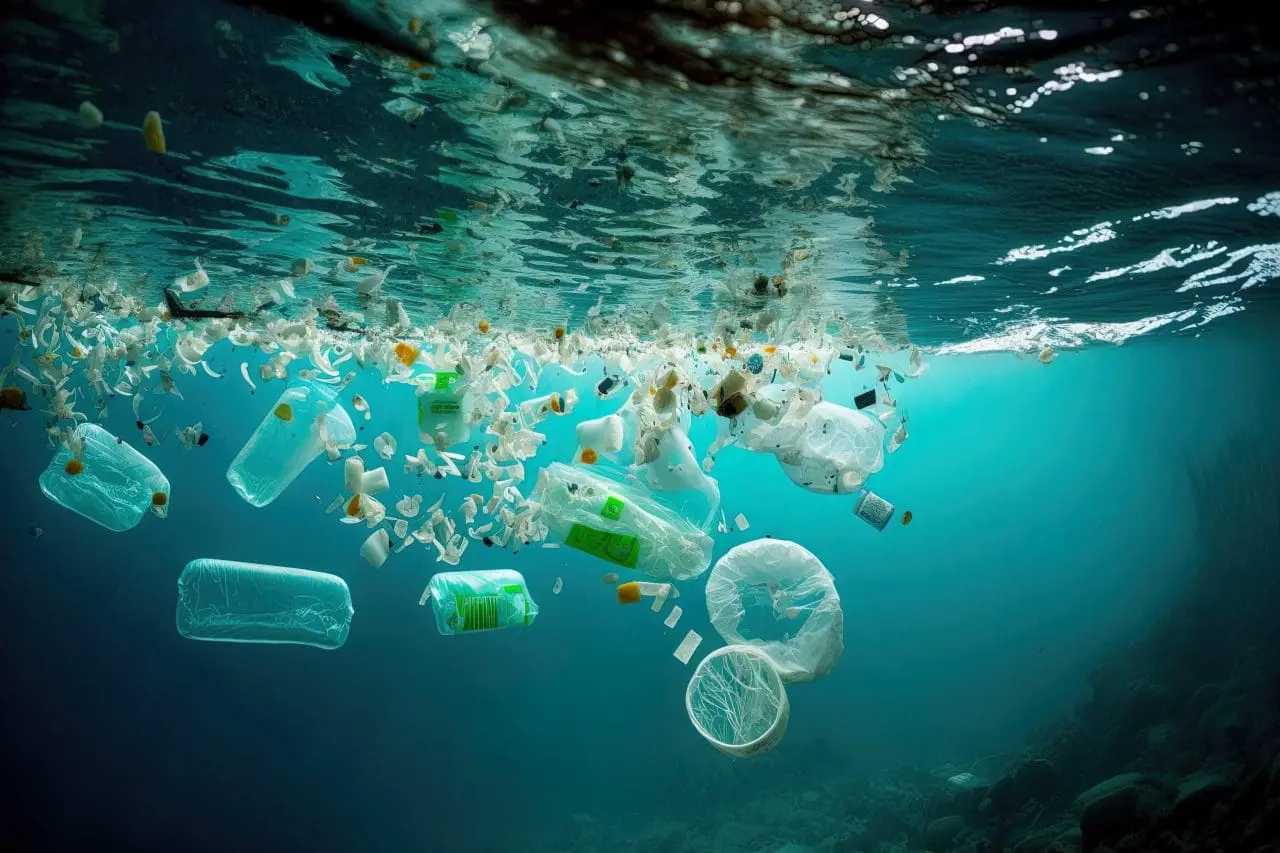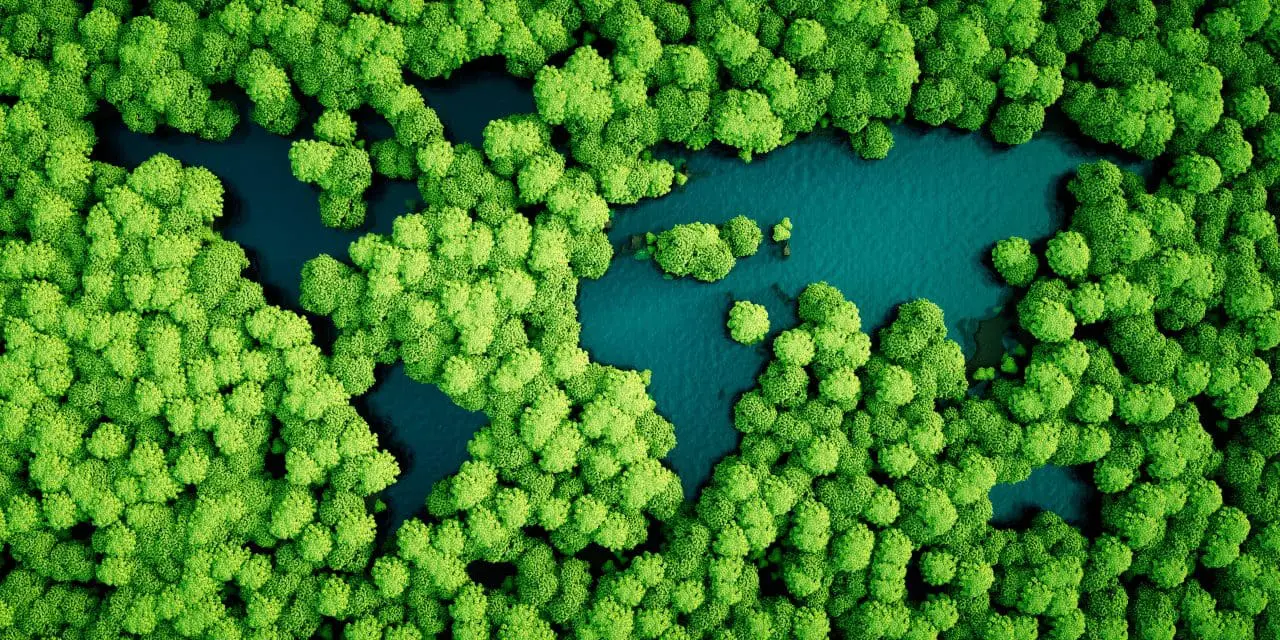

As global water pollution continues to rise, innovative technologies are being employed to help clean our lakes, ponds, waterways and harbours. Enter the ‘WasteShark’ from Dutch company RanMarine – a solar powered aquatic drone that removes floating pollution like plastics, algae and biomass. This revolutionary device is quickly becoming the future of clean water management solutions around the world.
The ‘WasteShark’ is designed to collect surface waste such as plastic bottles and bags while navigating independently through shallow waters. It is equipped with sensors that detect particulate matter in the water and can autonomously pick up large amounts of waste. Not only is it a cleaner, greener solution for water management, but it also reduces the need for manual labour and provides a more efficient way to monitor water quality.
The ‘WasteShark’ is powered by two 12 V Lithium batteries, which are recharged using solar panels mounted on its back. This allows the drone to operate continuously without having to return to shore for charging purposes – making it an environmentally friendly device as well. It can travel up to 4 hours at a time and covers up to 6 miles in 1 hour. This makes the ‘WasteShark’ an ideal solution for large areas that require regular cleaning or monitoring such as lakes, harbors and ports.
The Netherlands is no stranger to dealing with plastic pollution. That’s why RanMarine, a Dutch company, created the ‘WasteShark’ aquatic drone. This revolutionary device is quickly becoming the future of clean water management solutions around the world. Not only does it help reduce plastic pollution, but it also provides an efficient way to monitor water quality.
The ‘WasteShark’ is designed to be an autonomous floating robot that can detect and collect surface waste like bottles and bags while navigating independently through shallow waters. It is powered by two 12 V Lithium batteries, which are recharged using solar panels mounted on its back. This allows the drone to operate continuously without having to return to shore for charging purposes – making it an environmentally friendly device as well.
The ‘WasteShark’ has already proven to be a successful solution for combating plastic pollution in places like Rotterdam, Netherlands, where it is used to clean up the Maas River. The city saw dramatic changes in water quality after just one month of use – showing that this technology can make a real difference in reducing floating waste and mitigating water pollution.
RanMarine’s ‘WasteShark’ is designed with sustainability in mind. The aquatic drone is powered by two 12 V Lithium batteries, which are recharged using solar panels mounted on its back. This allows the drone to operate continuously without having to return to shore for charging purposes – making it an environmentally friendly device as well.
Not only does this help reduce plastic pollution, but it also provides an efficient way to monitor water quality. The ‘WasteShark’ can travel up to 4 hours at a time and covers up to 6 miles in 1 hour. This makes the ‘WasteShark’ an ideal solution for large areas that require regular cleaning or monitoring such as lakes, harbors and ports.
The ‘WasteShark’ is equipped with sensors that detect particulate matter in the water and can autonomously pick up large amounts of waste. This eliminates the need for manual labour, saving time, money and resources – making it a more cost-effective solution than traditional methods of clean-up.
Along with plastic waste, the ‘WasteShark’ is also designed to tackle algae and biomass. This includes things like sargassum seaweed, which has become a growing problem in many areas of the world. By removing these pollutants from rivers and lakes, the ‘WasteShark’ not only helps keep our waterways clean but also helps reduce water levels caused by excessive growth.
The drone operates as an autonomous system using GPS navigation and its onboard camera to detect objects in its path. It can identify floating debris down to 2mm – making it a highly effective tool for detecting and collecting wastewater. It can also collect larger pieces of debris, like bottles and other solid waste, by using a suction system on the bottom of the drone.
The ‘WasteShark’ from RanMarine is an innovative solution to tackle global water pollution. This aquatic drone utilizes solar power and advanced technology to autonomously remove plastic and other pollutants from our waterways. By eliminating large amounts of floating waste from rivers, lakes, ponds and harbours – this robotic cleaner is helping communities combat plastic pollution in a cost effective manner while improving water quality in eco-systems around the world.
The ‘WasteShark’ is the first in a series of aquatic drones being developed by RanMarine Technology. This solar-powered drone has been designed to operate autonomously and efficiently, working continuously without having to return for recharging purposes – making it both an eco-friendly device and a cost effective solution for areas with large amounts of floating waste.
The ‘WasteShark’ operates as an autonomous system using GPS navigation and its onboard camera to detect debris in its path. Its suction system on the bottom of the drone can collect larger pieces of debris, like bottles and other solid waste. The drone is also able to identify floating debris down to 2mm – making it a highly effective tool for detection and collection of pollutants from waterways.
The ‘WasteShark’ has been designed with an efficient operating system which eliminates the need for manual labour – significantly reducing cost and resources. This device offers an eco-friendly solution that addresses global water pollution, while providing a cost-effective alternative to traditional methods of clean up. In addition, the use of solar power makes sure that this aquatic drone will never run out of energy while on the job.
The ‘WasteShark’ from RanMarine is an innovative solution that is helping to reduce water pollution all around the world. By removing large amounts of floating waste from rivers, lakes, ponds and harbours – this robotic cleaner is providing communities with a cost effective way to combat plastic pollution while improving water quality in eco-systems.
The ‘WasteShark’ also helps reduce sargassum seaweed growth by collecting these pollutants from waterways. This not only improves the health of our oceans and coastal areas but also helps keep water levels low by eliminating excessive growth of algae and biomass.
Overall, the use of aquatic drones such as the ‘WasteShark’ are helping to reduce water pollution, improve the health of our waters and provide a cost effective alternative for cleaning up debris from lakes, ponds and harbours. With its advanced technology and solar power – this drone is making a difference in the fight against global water pollution.
The ‘WasteShark’ from RanMarine is a perfect example of how technology can be used to tackle plastic pollution and support sustainable solutions. This robotic aquatic drone uses solar power so it never runs out of energy, reducing the cost and resources needed for manual labour. It also collects pollutants down to 2mm in size – eliminating more waste than traditional methods like nets or skimmers.
The use of such devices not only helps reduce plastic pollution but has an added benefit of preserving the health of our waterways and eco-systems by removing excess algae and biomasses from rivers, lakes, ponds, and harbours. By providing a sustainable and cost-effective solution, the ‘WasteShark’ and other aquatic drones have opened a new avenue for combating plastic pollution.
The ‘WasteShark’ is an incredible example of how technology can be used to tackle environmental issues. This aquatic drone has revolutionized the way that people are combatting water pollution by providing a highly effective, low-cost solution for removing debris from rivers, lakes, ponds and harbours.
The use of autonomous robotic devices such as the ‘WasteShark’ allows for more efficient cleanup efforts that require fewer resources and personnel. This helps to reduce the cost associated with cleaning up water pollution while providing a more sustainable method of waste removal from our waterways.
Overall, the ‘WasteShark’ is setting an example for other aquatic drones and robotic devices in terms of how technology can be used to fight against global water pollution. By providing a cost-effective and sustainable solution, this innovative device is helping to make a difference in the fight to keep our waters clean.


